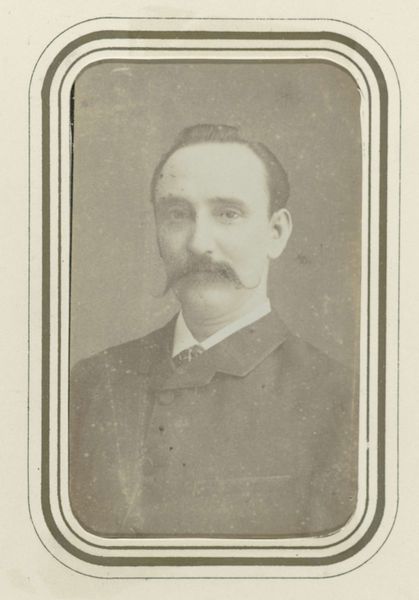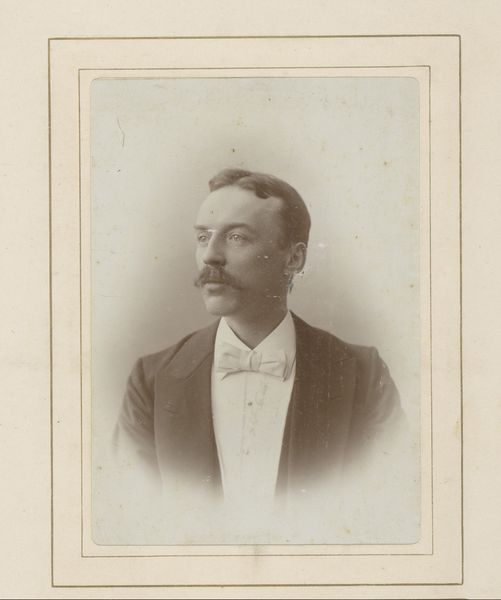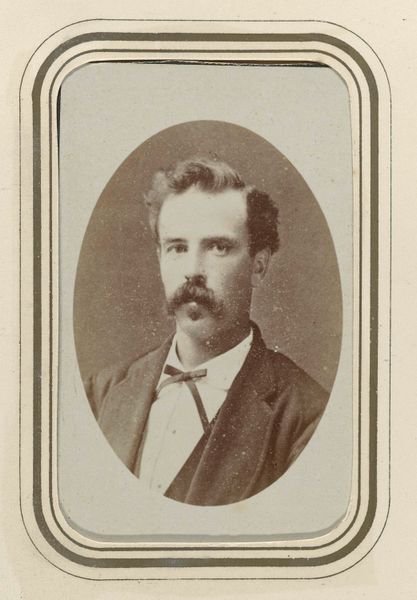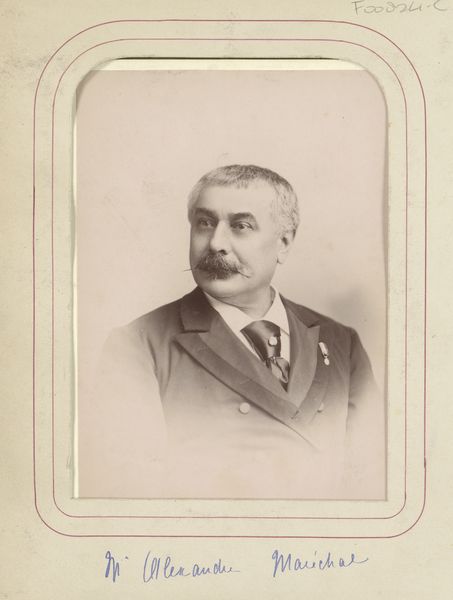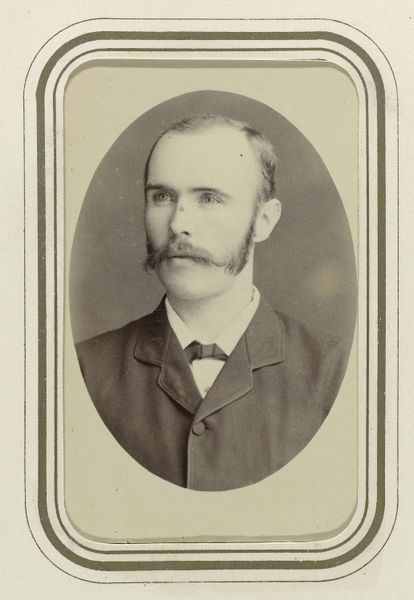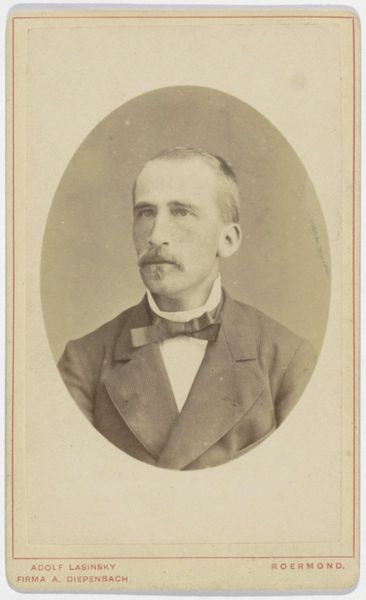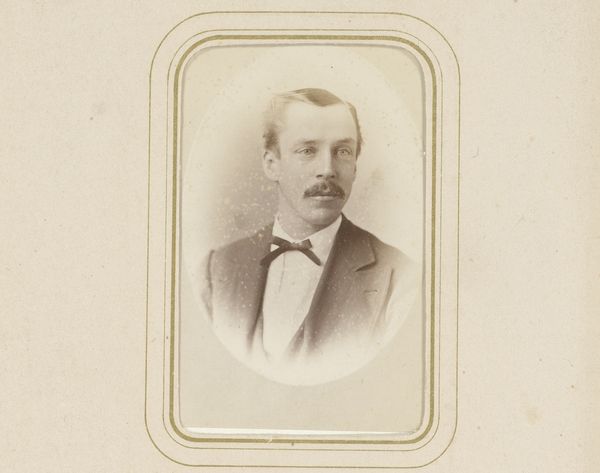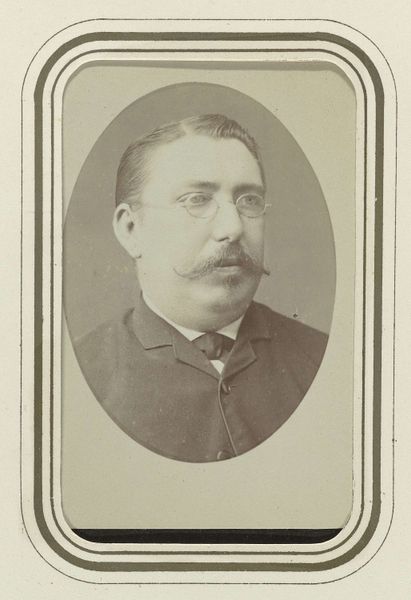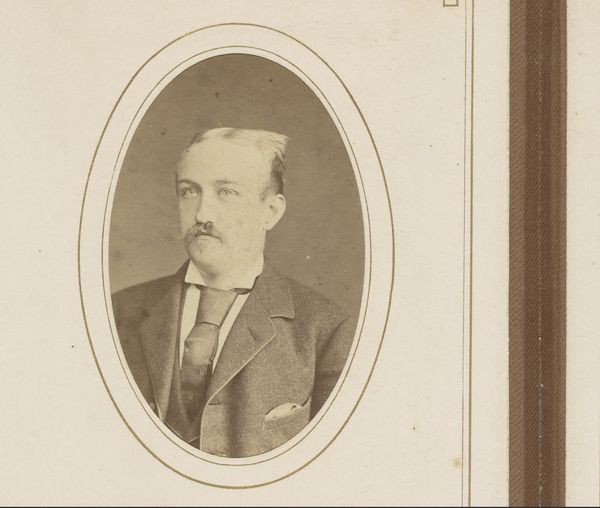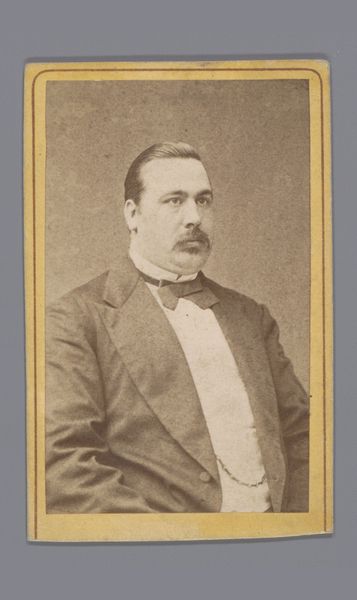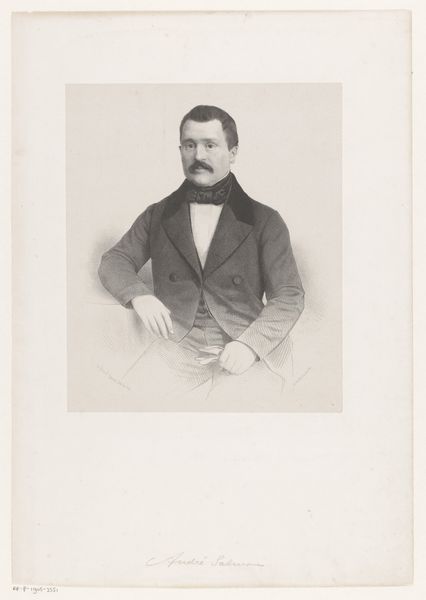
photography, gelatin-silver-print
#
photography
#
historical photography
#
portrait reference
#
gelatin-silver-print
#
19th century
Dimensions: height 88 mm, width 53 mm
Copyright: Rijks Museum: Open Domain
This small portrait was likely made using the albumen print process, a popular photographic technique in the 19th century. The process involved coating paper with egg white and silver nitrate, then exposing it to light through a negative. What's interesting here is the intersection of science and artistry. Photography, like industrial manufacturing, was a product of technological advancement. The rise of photography democratized portraiture. No longer just for the wealthy elite who could afford to commission painted portraits, ordinary people could now capture their likeness. The smooth, slightly glossy surface of the albumen print gives the image a crispness and clarity. This contrasts with the soft, painterly quality of traditional portraits. Think about the labor involved in creating this image. It required a skilled photographer, specialized equipment, and access to chemical supplies. The mass production of images like these had social and economic implications, transforming how people saw themselves and their place in the world. By considering the materials, techniques, and social context surrounding the creation of this photograph, we gain a deeper appreciation for its significance beyond just being a picture.
Comments
No comments
Be the first to comment and join the conversation on the ultimate creative platform.
